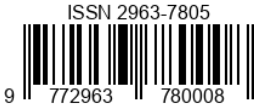Penerapan Lean Manufacturing Menggunakan Metode Waste Assessment Model (WAM) Untuk Mengurangi Waste Pada Lini Produksi Steel Structure
DOI:
https://doi.org/10.55606/jtmei.v2i4.2930Keywords:
Lean Manufacturing, Root Cause Analyst, Waste Assessment ModelAbstract
PT Gerbang Saranabaja is a company engaged in the steel fabrication and construction industry. The type of Engineer-to-order request in the production process causes the products produced to have their own characteristics and specifications according to client requests so that in the production process there is still waste caused by various factors. The purpose of this research is to identify critical waste with the Waste Assessment Model method, find out the root cause of critical waste with Root Cause Analyst and produce alternative recommendations for improvement with 5W + 1H Analysis in the production process at PT Gerbang Saranabaja. The results showed that the crisis waste in the production process was Motion with a final value of 0.00387, defect with a final value of 0.00354 and Inventory with a final value of 0.00345. The crisis waste that occurs is caused by various interrelated things and the alternative improvements that can be made are to improve team coordination in various aspects, evaluate and optimize the layout of the work area, increase awareness of work quality through training, review and improve production capacity planning and optimize line balancing in the production area.
Downloads
References
Alfiansyah, R. (2018). Waste Identification With Waste Assessment Model for Implementing Lean Manufacturing To Improve Production Process (Case Study on Glove Production Process). Institut Teknologi Sepuluh Nopember.
Astutik, W. (2022). Simulasi Peningkatan Kualitas Secara Kontinu Dengan Metode Waste Assessment Model (Wam) Dan Metode Deming Cycle (Pdca) Untuk Mereduksi Pemborosan Pada Perusahaan Manufaktur Tepung Tapioka. Universitas Hasanuddin.
Basuki, F. H. A., Aknuranda, I., & Perdanakusuma, A. R. (2023). Analisis Proses Bisnis CV Dinasty menggunakan Root Cause Analysis Dan Pendekatan Lean. Jurnal Pengembangan Teknologi Informasi Dan Ilmu Komputer, 7(4), 1533–1542. http://j-ptiik.ub.ac.id
Fhadillah, I., Anggraeni, N. F., & Awaliah Sugiarto, A. R. (2020). Analisis Pemborosan Di Pt. Xyz Menggunakan 8 Waste. Jurnal Ilmiah Teknologi Infomasi Terapan, 6(2), 157–162. https://doi.org/10.33197/jitter.vol6.iss2.2020.335
International Labour Organization. (2017). Lean Manufacturing Techniques for Textile Industry. In ILO Cataloging. ILO Publications. https://doi.org/10.1201 /9781420041989-9
Irwan Setiawan, A. R. (2021). Penerapan Lean Manufacturing Untuk Meminimalkan Waste Dengan Menggunakan Metode VSM Dan WAM Pada PT XYZ. Seminar Nasional Penelitian LPPM UMJ, 1–10.
Juliana, M. (2020). Penerapan Lean Manufacturing Menggunakan Metode Waste Assessment Model (WAM) Pada Industri Makanan (Studi Kasus di Usaha Mikro Kecil Menengah Nicesy). Universitas Sultan Ageng Tirtayasa.
Kurniawan, E. B., & Hariastuti, N. L. P. (2020). Implementasi Lean Manufacturing pada Proses Produksi untuk Mengurangi Waste Guna Lebih Efektif dan Efisien. Jurnal SENOPATI : Sustainability, Ergonomics, Optimization, and Application of Industrial Engineering, 1(2), 85–95.
Martin-Delgado, J., Martínez-García, A., Aranaz, J. M., Valencia-Martín, J. L., & Mira, J. J. (2020). How Much of Root Cause Analysis Translates into Improved Patient Safety: A Systematic Review. Medical Principles and Practice, 29(6), 524–531. https://doi.org/10.1159/000508677
Martinez-Gil, J., Buchgeher, G., Gabauer, D., Freudenthaler, B., Filipiak, D., & Fensel, A. (2022). Root Cause Analysis in the Industrial Domain using Knowledge Graphs: A Case Study on Power Transformers. Procedia Computer Science, 200, 944–953. https://doi.org/10.1016/j.procs.2022.01.292
Novitasari, B. D. (2022). Implementasi Value Stream Mapping Dan Value Stream Analysis Untuk Meminimalisir Pemborosan Waktu Pada Proses Distribusi di PT. Nur Jaya Energi (Vol. 15, Issue 2, pp. 1–23).
Nurwulan, N. R., Taghsya, A. A., Astuti, E. D., Fitri, R. A., & Nisa, S. R. K. (2021). Pengurangan Lead Time dengan Lean Manufacturing: Kajian Literatur. Journal of Industrial and Manufacture Engineering, 5(1), 30–40. https://doi.org/10.31289/jime.v5i1.3851
Puspitasari, F., Moengin, P., & Witonohadi, A. (2023). Pelatihan Minimasi Waste dengan Lean Manufacturing pada PT . Ganding Toolsindo. 02(02), 16–20.
Resphaty, D. A. (2021). MINIMASI WASTE PADA LINI PRODUKSI DENGAN KONSEP LEAN MANUFACTURING (Studi Kasus: PT. FUMIRA) (Vol. 14, Issue 1). Universitas Islam Indonesia.
Ridwan, A., Arina, F., & Permana, A. (2020). Peningkatan kualitas dan efisiensi pada proses produksi dunnage menggunakan metode lean six sigma (Studi kasus di PT. XYZ). Teknika: Jurnal Sains Dan Teknologi, 16(2), 186. https://doi.org/10.36055/tjst.v16i2.9618
Rini, M. W., & Ananda, N. (2022). Penyuluhan Warehouse Management pada UMKM melalui Perbaikan secara Berkelanjutan. PengabdianMu: Jurnal Ilmiah Pengabdian Kepada Masyarakat, 7(1), 80–86. https://doi.org/10.33084/pengabdianmu.v7i1.2302
Salsabila, I. R. (2021). ANALISIS PENERAPAN KONSEP LEAN MANUFACTURING PADA PROSES PRODUKSI STAINLESS STEEL COIL UNTUK MEREDUKSI PEMBOROSAN (WASTE) DI PT. IMR ARC STEEL [Universitas Pembangunan Nasional “Veteran” Jawa Timur]. In repository.upnjatim.ac.id (Vol. 14, Issue 1). http://repository.upnjatim.ac.id/id/eprint/2346
Sangga, P., & Insanita, R. (2022). Penerapan Praktik Lean Service Melalui Value Stream Mapping pada Departemen Food and Beverage Service Hotel X. Jurnal Manajemen Dan Usahawan Indonesia, 45(2), 94–110.
Sarman, S., & Soediantono, D. (2022). Literature Review of Lean Six Sigma (LSS) Implementation and Recommendations for Implementation in the Defense Industries. Journal of Industrial Engineering & Management Research, 3(2), 24–34. https://jiemar.org/index.php/jiemar/article/view/273
Susendi, N., Suparman, A., & Sopyan, I. (2021). Kajian Metode Root Cause Analysis yang Digunakan dalam Manajemen Risiko di Industri Farmasi. Majalah Farmasetika, 6(4), 310. https://doi.org/10.24198/mfarmasetika.v6i4.35053
Downloads
Published
How to Cite
Issue
Section
License
Copyright (c) 2023 Jurnal Teknik Mesin, Industri, Elektro dan Informatika

This work is licensed under a Creative Commons Attribution-NonCommercial-ShareAlike 4.0 International License.








